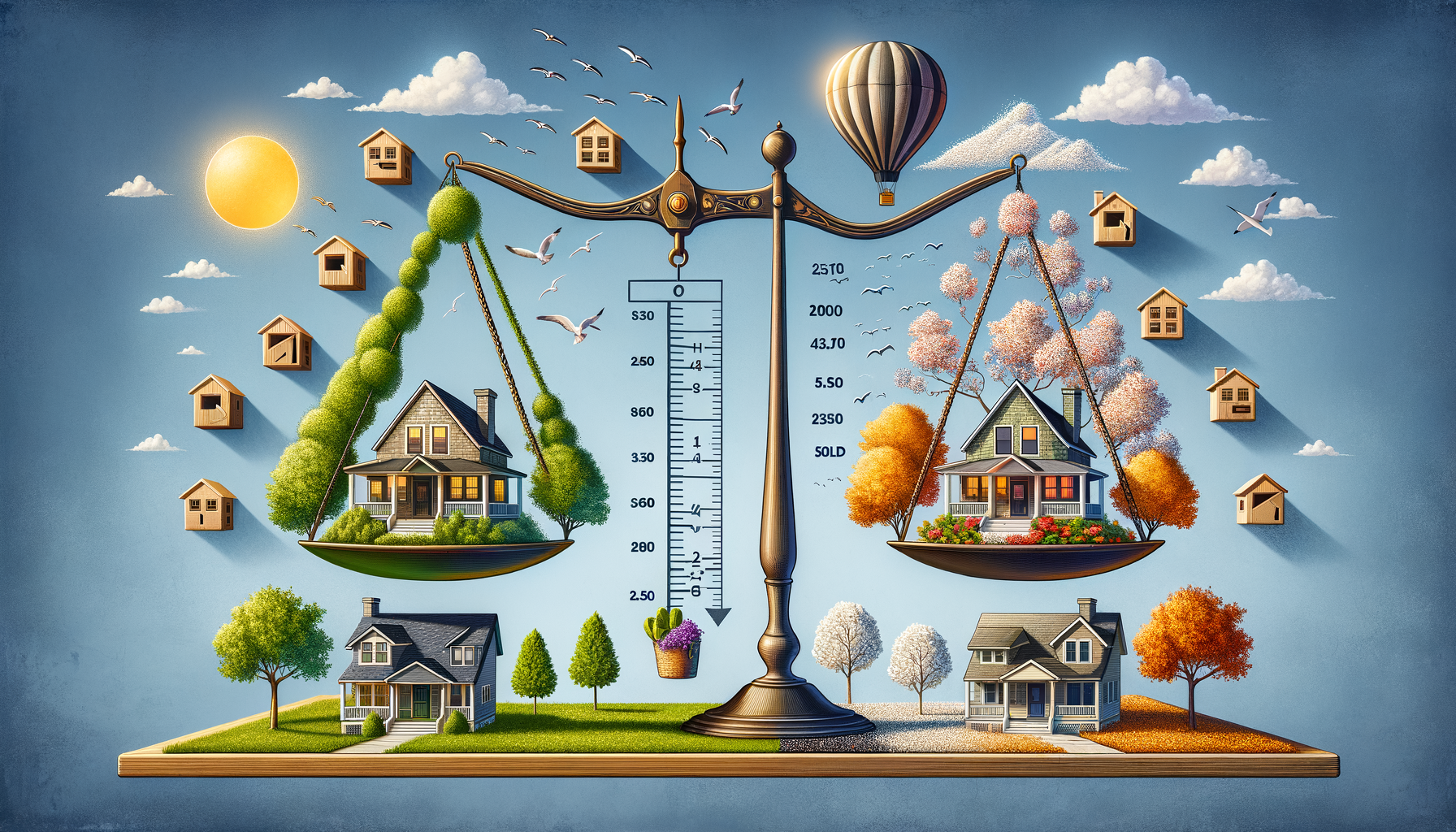
The landscape of the real estate market tends to ebb and flow under the sway of economic trends, with mortgage rates being among the top elements affecting how inventory moves from one season to another. As we look ahead to the year 2024, it’s essential to spotlight the likely trajectory of mortgage rates and their probable influence on seasonal real estate inventory.
To effectively understand and anticipate mortgage rates, we need to bear in mind that they hinge on two key components: the broader economy’s health and inflation rates. Lenders adjust their interest rates typically based on the condition of the economy—and inflation is an essential factor in those adjustments. When the economy is healthy, housing demand typically increases, subsequently making interest rates rise.
Undeniably, with the predicted economic growth, the year 2024 is likely to witness increased mortgage rates. As the economy heals from the impact of the COVID-19 pandemic, demand for homes surges, suggesting that the price will follow the rise in mortgage rates. This situation arises due to an intense competition for available inventory, leading to higher home prices. However, the increased mortgage rates might not necessarily dampen the demand for housing.
A rise in mortgage rates can impinge on affordability for some buyers, which, in turn, may decrease the home-buying rush. Consequently, the competition may lessen, which might stabilize housing prices despite high mortgage rates. Many potential buyers who were initially priced out might find themselves scope to make a move within the housing market. Additionally, we might witness an influx of first-time homebuyers spurred by programs aimed at helping such individuals secure a footing in the real estate sector.
Nonetheless, climbing mortgage rates can also stymie home sales. Existing homeowners may decide that it’s not an opportune moment for upsizing due to higher interest rates and might choose to stay put. This decision could mean fewer homes appearing in the market, subsequently leading to a lower inventory.
Another perspective suggests that while a rise in the mortgage rates may cause the market to initially cool down, it could potentially stimulate some homeowners to sell their properties faster before the rates climb further. The expected boost in the economy could spur job growth, which can heighten consumer confidence and consequently encourage sales in the housing market.
As the year 2024 unfolds, real estate agents and brokers need to adjust their strategies according to the interplay of the economy, interest rates, and housing inventory. They must possess the acumen to interpret these dynamics and guide their clientele accordingly.
Furthermore, it’s plausible to assume that market conditions might not correlate with mortgage rate upticks universally. Region-specific factors like job growth, availability of land and housing, local regulations, and population growth can independently impact housing demand and inventory.
One potential strategy for the housing industry to mitigate the impact of increasing mortgage rates may entail broadening the inventory. This approach could involve encouraging new home developments as a way to give buyers more options, subsequently stabilizing pricing and mitigating competition. Moreover, revitalizing existing properties can also be a phenomenal way to boost inventory.
Another avenue that real estate stakeholders could explore with precision includes making the most of market segmentation due to diverse reactions to rate rises. For instance, luxury and high-end housing markets may experience differing dynamics than entry-level segments. Understanding these discrepancies can help real estate professionals to maneuver deftly and maintain momentum even as rates escalate.
Lastly, it’s prudent to remember that low interest rates, while attractive to homebuyers, have their own downside. They can pile on exorbitant housing costs in an “overheated” market. Conversely, while higher mortgage rates can unnerve some buyers initially, the resultant market cool down might protect a price bubble from swelling too large, which could ensure the long-term health of the real estate sector.
In sum, the predicted increase in mortgage rates in 2024 ushers in a mixed bag of impacts on real estate’s seasonal inventory. Potential ramifications vary from a slowdown in home sales to a shift in the pricing mechanism in the housing market. But with smart, dynamic strategies and a profound understanding of the market, real estate stakeholders can certainly adapt and thrive amidst these changes. As we metamorphose through the real estate plot of 2024, it’s important to remain nimble, prepared, and well-informed to successfully navigate the tides of change.

